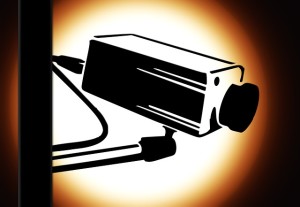I recently listened to an interview with filmmaker Stanley Nelson by NPR, “Policing the Police”: How the Black Panthers Got Their Start.
As I listened to the interview, I kept circling back to parallels that can be seen as much today as then: our police forces are not made up of members from the communities they serve. Many police officers do not live in the places changed through their policing, and their kids don’t go to school in these areas either. This is especially the case in sprawling urban areas like the Bay Area and Los Angeles. This community disconnect fundamentally changes the nature of policing, especially when racism and privilege enter into the mix.
 At the most fundamental level, “policing the police” acts a check on authority, seeking to expose and reform practices that fail to de-escalate violence in a community. In action, this takes many forms. In media, “policing the police” is used when discussing reforms in prosecuting and investigating police abuse. Citizen groups create public dialogue around practices and policies of police and justice departments (this has become more popular lately as the police force calls for re-training to end police brutality). Then there are groups like Copwatch, which literally follow police to serve as witnesses, oftentimes documenting their actions on video as evidence as well as to educate the community on appropriate application of laws.
At the most fundamental level, “policing the police” acts a check on authority, seeking to expose and reform practices that fail to de-escalate violence in a community. In action, this takes many forms. In media, “policing the police” is used when discussing reforms in prosecuting and investigating police abuse. Citizen groups create public dialogue around practices and policies of police and justice departments (this has become more popular lately as the police force calls for re-training to end police brutality). Then there are groups like Copwatch, which literally follow police to serve as witnesses, oftentimes documenting their actions on video as evidence as well as to educate the community on appropriate application of laws.
Policing the police is a way to recognize that injustice is present and the status quo is not working. But to fully, and sustainably, address these issues, we must allow ourselves to think beyond the current structure.
When I think about creating something new, two thoughts come to mind: 1. Will this action work to change the culture on a micro level? and 2. Will this action be sustainable AND inclusive, thus functioning as an example of what could be possible on a macro level?
What about populating the police force with members of the community it serves? We could, for example, shift the mission of the police force to community-oriented policing and reward behavior that supports that. Richmond police chief Chris Magnus employed a similar approach in his police force and saw homicide numbers decrease dramatically.
But that leaves us with the current system, and thus it cannot fully eliminate the structural injustices. Here are a few beyond-the-structure efforts that are actually being implemented:
Offer fellowships to a community’s violent population.
In 2007, Richmond, CA funded Operation Peacemaker, a program overseen by the Office of Neighborhood Safety (ONS) to reduce gun violence caused by gang rivalries. Four times a year, the ONS assesses police records to identify 50 of the most likely persons to engage in, or be victims of, gun violence. The ONS then builds trust with those individuals, eventually inviting them to become fellows Fellowship participants are matched with a mentor, attend meetings, work with their rivals and receive up to $1,000 per month for a maximum of nine months.
Creating opportunity and fostering relationships are fundamentals of the program. Fellows are encouraged to build relationships with members of rival gangs also in the program.
Fellows often go back to school, gain technical skills and re-enter the workforce. Many more join groups in their local community engaged in restorative justice. Some also join ONS as program ambassadors, mentors, and recruitors.
Operation Peacemaker has been successful, and for a fraction of the cost of incarceration or increased policing (it costs the program about $20,000 per person compared to $200,000 for a police officer). Since its implementation, Richmond recorded its lowest number of firearm assaults and homicides in over 40 years (a drop from 47 in 2007 to 18 in 2012). And as for the fellows, since 2009, 94% are still alive, 84% have not been injured by a firearm and 79% are not suspected of firearm related activities.
Train and deploy Unarmed Civilian Peacekeepers.
This can take a traditional form as a “replacement” to police. But it can also be smaller local groups that are called on when needed, like those who work with the Shanti Sena Network and Nonviolent Peaceforce.
In 2013, the Austin Coalition for Youth Justice in Chicago, IL responded to rising violence in their community by leveraging the intimate space created in barber shops. The Coalition trained over thirty barbers and stylists in de-escalation and listening skills. Barbers offer their shops as a safe meeting space to discuss and resolve conflict.
I encourage you to envision an institution whose purpose is to de-escalate violence in your community. What does that look like to you? How does it engage members of the community?








